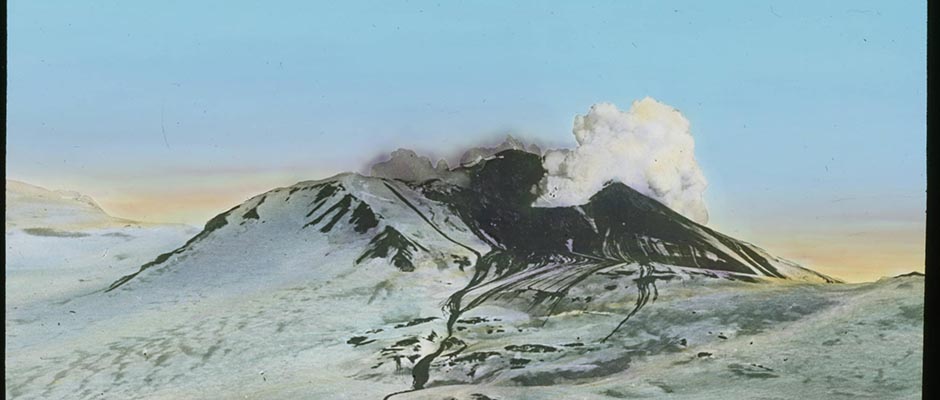-
Geology of Novaya Zemlya
Encyclopedia Arctica Volume 1: Geology and Allied Subjects
001 | Vol_I-0549
EA-I. (N. V. Pinegin)
GEOLOGY OF NOVAYA ZEMLYA
Geologically and structurally, Novaya Zemlya is extremely complex.
Investigations by Russian and Norwegian geologists show that the early
Paleozoic era was inaugurated by broad, shallow epeiric seas which extended
over the region where Novaya Zemlya now lies. This is proved by the fact
that Cambrian fossil remains, consisting of brachiopods and trilobites,
are found in the strata deposited in those seas. The earliest known up–
lift of Novaya Zemlya, according to O. Holtedahl, took place in the middle
Silurian period, since marine deposits of this age have not been found there.
The area was reinundated by the sea in the late Silurian period, and remained
under water until the middle of the Devonian period when volcanic activity
and orogenic movements began to develop. There are some indications that
the newly uplifted part of the land formed a portion of a large Devonian
(Old Red) continent. The location of the present Arkhangelskaia Bay was on
its margin, but at that time, a large lagoon or inland sea lay on the site
of this inlet. That there were volcanoes nearby is attested by recurrent
beds of ash and sub-marine lava flows in the lagoonal deposits. Among the
fossil remains found on Novaya Zemlya, there is considerable material which
shows that late Devonian deposits were laid down in a basin of stagnant water.
In the ensuing epochs (the lower and middle as well as the early part of the
002 | Vol_I-0550
EA-I. Pinegin: Geology of Novaya Zemlya
upper Carboniferous period), the ancient continent on the site of Novaya
Zemlya was covered by a warm, shallow, but open sea, for thick strata of
limestone have been left. Subsequently a slight elevation occurred, and
the land was exposed; but somewhat later, in the pre-Artinsk period, the
continent once more was submerged — and this time for a long time.The time of the final uplift of Novaya Zemlya has not yet been estab–
lished with complete precision. It is known only that in the Permian period
Novaya Zemlya was still under water, but no fossils of marine animals belong–
ing to this time have been found up to the present. Probably an orogeny took
place simultaneously with the formation of the huge mountain folds which
separated Europe from Asia. The complicated folds of the Novaya Zemlya moun–
tains are relies of this major orogenic period. During these diastrophic
movements, masses of volcanic rock were extruded through fissures which had
formed and were poured out over the older sedimentary rocks, altering them
by their pressure and heat.Geological observations tend to show that Novaya Zemlya was probably
elevated above sea level during the entire Mesozoic period, since fossili–
ferrous marine sediments are lacking except for some late Jurassic and
Cretaceous forms derived from erratics from an unknown source. It is still
possible, of course, that this island was partially submerged, but this
question has not been settled with full clarity.The surface features of Novaya Zemlya, with its characteristic long,
narrow, transverse trenches or intermontane valleys, were developed by stream
erosion during the Tertiary period. During the Pleistocene epoch these valleys
were overdeepened by ice and the rough mountain features partly smoothed down.
The cumulative effect of all these processes resulted in the present orographic
003 | Vol_I-0551
EA-I. Pinegin: Geology of Novaya Zemlya
configuration of Novaya Zemlya.It is the opinion of the Norwegian geologist Grönlie that glacial ice
completely covered Novaya Zemlya, including the tops of the highest mountains
during the Pleistocene epoch. Under the weight of this icecap, Novaya Zemlya
was depressed and former shore lines stood at least 350 meters higher than at
present. When the ice cover began to melt away, the land began to rise in
response to isostatic readjustments, but the recovery of levels did not pro–
ceed altogether uniformly and stillstands are indicated by the numerous
shore terraces which are clearly seen on the coastal heights. This uplift
has been in progress throughout all of the post-Pleistocene and Recent epochs,
and down to the present time. However, there are indications that such move–
ments have now slackened somewhat. This seems to be substantiated by the
status of the modern shore line, which is more maturely developed than those
at higher elevation. But it must be noted that historical records show that
the strand lines of the island have been rising considerably within the past
few centuries.N. V. Pinegin, Novaya Zemlya, Arkhangelsk ,
1935, p.59 ff. Translated by
Ordway Southard

